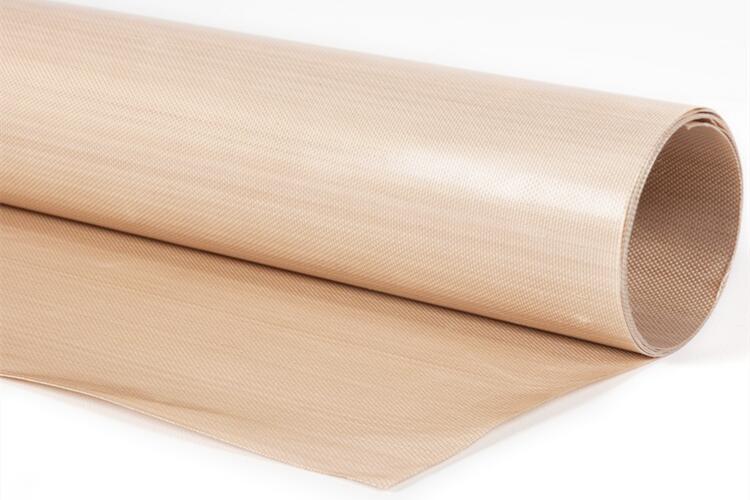Teflon fabrics are commonly used in our daily lives, particularly in the solar panel manufacturing industry. Their unique properties make them ideal for warding off heat, cold and UV rays with their unbeatable temperature range of up to 260 degrees Celsius. This makes PTFE Teflon fabrics highly weather-resistant and able to combat constant exposure to harsh elements.
With its excellent features and long-lasting durability, it’s no surprise why solar panel manufacturers have been relying on this Teflon cloth so heavily.
If you are in the market for quality PTFE coated fabrics for use in the lamination of solar panels, look no further than Deer Hunter. These laminator release sheets provide excellent resistance to water, chemicals, corrosion and withstand high temperatures, thus adding more durability and longevity to your solar modules construction process.
Today, I’m going to share something useful with you about PTFE solar laminating fabric in order to help you make a better selection.
Now here we go!
What is Teflon Coated Glass Fabric?

Teflon coated glass fabric is a new high-performance, multi-purpose composite material that can be used in a variety of applications. It is made up of a woven glass cloth substrate coated with polytetrafluoroethylene (PTFE) resin, which makes the fabric waterproof, durable and high temperature resistance.
This material has excellent electrical properties, chemical resistance, and fire retardancy. Additionally, it can remain flexible in cold temperatures and has a low surface energy that limits adhesion from various contaminants.
Teflon coated cloth is available in custom sizes and roll lengths to fit your exact needs. It can also be cut or manufactured to order.
Properties of Teflon Glass Fabrics
Teflon fabric, also known as PTFE fabric, is an ideal material used in solar cell laminating machines. It consists of high quality glass fabrics and PTFE. These materials create a super smooth and high-gloss surface coating that is resistant to wear, low friction, chemical exposure and temperatures ranging from -70°C to +260°C. The non-toxic qualities of the fabrics make it safe for use in laminating solar panels and other sensitive items.

- Superior non-stick surface, enables lifetime as a laminator sheet.
- Excellent dimensional stability and strong tensile strength due to glass fabrics.
- Outstanding temperature resistance from -70°C to 260°C.
- PTFE coating provides excellent resistance to all chemicals, do not worry about the harmful effect caused by chemicals during production.
- Low friction coefficient, non-flammable and reusable, enables your working efficiency.
- Easy to clean and maintain.
Which kind of Teflon fabrics are used for solar panel manufacturing?
Teflon release sheets are essential in the lamination process of creating solar PV panels as protective coverings, due to their exceptional heat resistance and non-stick quality. The primary purpose of Teflon cloth is to keep the melted EVA film from attaching to the silicone rubber plate or heating plate. When EVA becomes adhered to these surfaces, removing them can be very challenging.
Color: Brown
Standard thicknesses: 0.25mm, 0.30mm, 0.35mm
Common width: 1200mm, 1500mm, 1800mm, 2000mm, 2200mm, 2350mm, etc.
Physical Characteristics of PTFE Solar Laminating Fabrics
| Item No. | Thickness(mm) | Max Width(mm) | Nominal Weight(g/m2) | Tensile Strength(N/5cm) Warp/Weft |
| DH025 | 0.23±0.01 | 1250 | 480±10 | ≥2100 ≥1800 |
| DH030 | 0.28±0.01 | 3000 | 560±15 | ≥2400 ≥2050 |
| DH035 | 0.35±0.01 | 3000 | 660±20 | ≥2600 ≥2300 |
* Technical data above is based on our general experience and is given in good faith. We are however unable to accept responsibility in respect of factors which are outside our knowledge or control. All data is subject to change without notice. Some items may not be on stock and/or a minimum order quantity may apply.
How to Apply Teflon Fabrics for Solar Laminator Correctly?

Teflon cloth is a unique material with excellent heat resistance, non-stick attributes, and anti-static properties. It’s extremely durable and tightly woven, making it a popular choice for heavy-duty applications such as those found in solar photovoltaic module plants. Its special properties make it an ideal replacement for traditional materials.
Solar lamination fabrics are an important part of the lamination process for photovoltaic modules. At least two sets (4 sheets) of these fabrics are required to be used in each solar laminator. They consist of PTFE laminated cloth which acts as a protective cover and backing cloth on the module and helps to prevent the sticking of EVA and other substances to the machine under high temperatures.
PTFE coated glass fabrics are essential for effective lamination processes and are highly reusable. However, it is important to allow them to cool down before reuse in order to avoid any transfer of EVA particles from the laminated fabric. If left on the fabric, these residual EVA particles can be transferred onto the glass during re-use, leaving behind mounds of dust that can block parts of cells and create long-term hot spot effects when used outdoors.
PTFE coated glass cloth is often used as a release sheet for many laminating processes, and also as conveyor belts for specific automatic laminator machines. For these cases, the surfaces of the PTFE must be textured to ensure that there is an adequate level of friction between it and the materials being laminated. Additionally, in order to prevent damage to either the conveyor belts or material, the tension of the belt should not be too high when conveying.
Attention of Installing Teflon fabric in Solar Laminator
- When using Teflon fabrics to protect machines from heat, it is important to keep the surface as flat as possible. This will reduce the risk of creases appearing on the laminated surface and decrease the fabric’s lifespan. Before cutting and installing Teflon sheet, make sure that any wrinkles are removed.
- Keep your Teflon cloth looking like new with a quick wipe-down! Any EVA glue or residue that may have accumulated on the surface can be easily removed by simply using a semi-damp cotton cloth.
- When it comes to heat-resistant Teflon fabric, slight variations in color batch-to-batch are normal. This won’t influence the quality of the product or its use in any way.
Maintenance of Teflon PTFE Fabric
Teflon PTFE fiberglass fabric is an incredibly strong and durable material that can withstand extreme temperatures, resist to most chemicals, and has a smooth and non-stick surface. It can be used in a wide variety of applications, such as hot food electric gaskets and conveyor belts of drying machines due to its unique properties. The fabric has high strength and elongation, making it highly resistant to deformation, while also being very light weight. Furthermore, it features excellent chemical stability and has good thermal resistance between -70 to 260℃.
To ensure the longevity and stability of your Teflon PTFE coated fiberglass fabric, it’s important to practice proper maintenance habits during use. This includes regular cleaning and repair work as needed.
- Cleaning Teflon PTFE fibreglass fabric is relatively easy – simply wash the sheet with water and then dry it with a cloth. This will ensure that your fabric remains in good condition and lasts many years.
- Keep your Teflon PTFE fibreglass fabric looking as good as new by regularly applying a coating of silicone oil to its surface.
- Teflon PTFE fiberglass fabric offers superior protection against wear and tear, protecting it from unsightly scratches caused by metal objects.
- For maximum longevity of your Teflon PTFE fiberglass fabric, make sure to routinely wipe and oil its rollers for reduced wear. Proactive maintenance is key in ensuring a long lifespan.
- In order to get the best results from Teflon PTFE fiberglass fabric, it is important to ensure that all relevant machinery and equipment are regularly replaced after a period of one year. Not doing so could lead to malfunctioning of the fabric and potential losses inside it.
- Keeping your Teflon PTFE fiberglass fabric equipment powered off after use is essential for maintaining peak performance and longevity.
Notes:
Maintaining the integrity of Teflon PTFE fiberglass fabric should not be handled by anyone who is not trained and qualified in this field, in order to keep both costs and risks at a minimum. When done correctly, this fabric can provide superior strength, durability and even chemical resistance. After all, good maintenance can increase the working time of Teflon fabrics.
Frequently Asked Questions about Teflon Fabrics
Is Teflon the same as PTFE?
The simple answer is that they are the same thing: Teflon™ is a brand name for PTFE (Polytetrafluoroethylene) and is a trademark brand name used by the Du Pont company and its subsidiary companies (Kinetic which first registered the trademark & Chemours which currently owns it).
What is EVA material in solar panel?
EVA is ethylene vinyl acetate, a material that has good radiation transmission and low degradability to sunlight. This is a thermoplastic polymer used in solar modules as an encapsulating agent since, by applying heat to the assembly, it forms a sealing and insulating film around the solar cells.
How many times can you reuse a Teflon sheet?
In most cases, these liners can be reused for up to a hundred or so uses. To prolong use, avoid creasing the mat and using added fats and oils.
Steps – How to Buy PTFE Fabrics?
If you’re in the market for PTFE fabrics, there are some important steps to follow before you make a purchase.
First, research different types of fabrics and materials to determine which type of PTFE fabric is best suited for your needs. Once you’ve narrowed it down, determine what kind of construction can withstand the desired application.
Next, decide if you need a standard or custom size and shape of the fabric before placing an order.
Finally, ensure that your chosen manufacturer has experience creating fabric from high-quality material to guarantee a durable product with long-lasting results.
Conclusion:
Teflon fabric is an excellent choice for use in the solar module lamination process. It provides superior protection against wear and tear and is easy to clean and maintain.
Deer Hunter is committed to providing a wide range of Teflon fabrics in rolls or sheets to meet the varying needs of our customers and their industries.
Now it’s your turn. I want to hear from you.
Which kind of PTFE Teflon fabrics do you think you want to try?
Are you going to test this material first or place a trial order from us?
You also can send an inquiry directly from the right table sheet.




